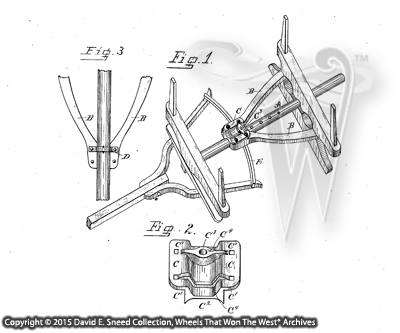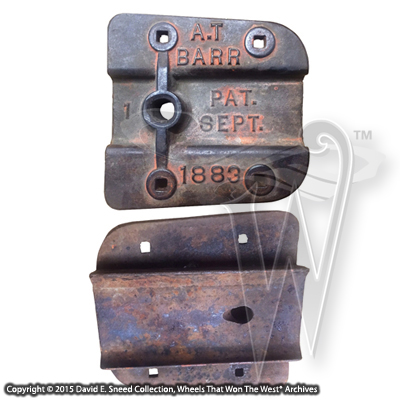We have a lot of historical elements housed in the Wheels That Won The West® Archives. From early print blocks, catalogs, flyers, trade cards, correspondence, signs, and other advertising media to original vehicles, parts, accessories, and technology, the compilation covers a broad segment of our nation's growth and development. Individually and collectively, these pieces help us tell the real story of America's first - and largest - transportation industry. With so many players across multiple centuries, it's a story that has yet to be fully shared but one we're committed to pinning down and opening up more every day.
With that as a bit of background, we've regularly pointed out that every original part of a vintage wagon has purpose. It makes no difference how big, small, obvious, or unnoticed an element is; every piece has a roll to play in the success of the whole. As a result, these vehicles are far from being crude conveyances thrown together with no thought or focus. Likewise, it's no exaggeration to say that the survivors are rare monuments holding more history, science, math, art, engineering, and technology than most have ever imagined.
 |
| This 1883 patent allowed round-shaped reaches to be incorporated into more 'modern' reach couplings. |
Throughout the 18th, 19th, and early 20th centuries, these wheels were continually tested, modified, and redesigned by their builders. The process, itself, is a testimony to the American spirit and drive to excel. With that in mind, this week, we'll point out a particular style of reach plate designed by Alexander Barr of Louisville, Kentucky. The idea was awarded a patent by the U.S. Patent Office in 1883. For those unfamiliar with the term 'reach plate' - it's the center metal panel(s) or cast iron piece(s) that connect to the reach and rear hounds, thereby linking the front and back segments of the running gear. The design also allows the undercarriage to be shortened or lengthened for different use purposes.

The heavy cast iron fabrication in Alexander Barr's reach plate was another advantage of the design. Note the curved contours on the bottom of the plate.
Unlike other reach plates of the day, Mr. Barr's design was meant to bridge the gap between styles with upper and lower plates sandwiching the coupling pole (reach) and earlier banded reach styles. The purpose was meant to allow the use of traditional round poles (versus square edged) to serve as the reach while also enabling the rear hounds to be drawn farther forward when desired. This made it easier to use the running gear in a greater diversity of purposes - from hay racks and wheat trucks to hauling lumber and other needs.
Like so many seemingly ordinary elements in a wooden vehicle's construction, the complexity of this design goes far beyond initial appearances. It's one more reason every early heavy vehicle is worthy of a deeper look. More often than not, these wooden warriors are full of intriguing history and countless stories.
By the way, if you haven't signed up to receive notifications every time we post a blog, just click the link in the upper right of our website. You'll receive a confirmation e-mail that you're officially on board.
We appreciate your continued feedback and look forward to sharing even more wooden vehicle info in the coming weeks.
Please Note: As with each of our blog writings, all imagery and text is copyrighted with All Rights Reserved. The material may not be broadcast, published, rewritten, or redistributed without prior written permission from David E. Sneed, Wheels That Won The West® Archives.